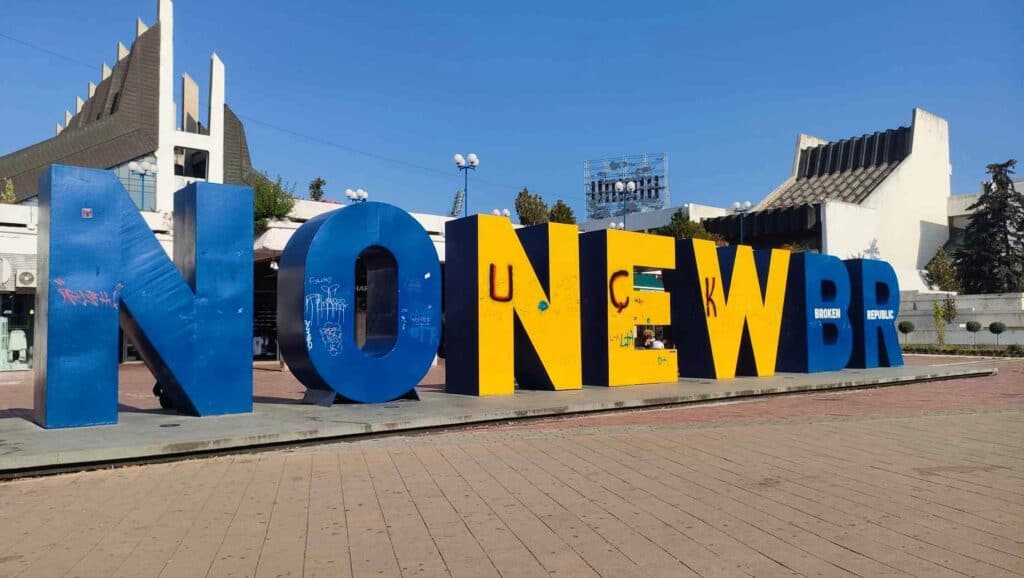This article may contain affiliate / compensated links. For full information, please see our disclaimer here.
Let’s be honest! Pristina is not an especially attractive city. It has messy architecture with high-rise communist designs, modern skyscrapers and some Ottoman heritage. Pristina doesn’t have stunning tourist attractions, but it has a vibrant nightlife coupled with super stylish restaurants and bars unparalleled in the summertime when seemingly all Kosovars who live abroad return to their homeland. This is a complete guide about what you can visit in one day in Pristina and around. In addition, get inspired about the best day trips from Pristina.
- What you should know about Pristina
- Is Pristina safe?
- How to get around in Pristina?
- What is the best time to visit Pristina?
- How to spend one day in Pristina
- What to eat in Pristina
- Best restaurants and cafés in Pristina
- Where to sleep in Pristina
- What to see around Pristina
- Half-day trips from Pristina
- Full Day trips from Pristina
- Other articles about Kosovo
- Other articles about the Balkan
What you should know about Pristina
Pristina was a small town for a long time, and it only developed into an important trading and mining center during the 14th and 15th centuries. It became a multicultural city, where Albanian, Turkish, and Serbian were spoken in the colorful bazaar. Mosques, Catholic and Orthodox churches stood next to each other, and even a small Jewish community existed. When Pristina was chosen as the capital of Kosovo during the communist Yugoslavia, it underwent rapid construction that also included the destruction of the Ottoman buildings (mosques, bazaar, houses), simply said the past heritage. The Serb occupation under Milošević and the period under UNMIK (United Nations Interim Administration Mission in Kosovo) also left a mark on the city. It attracted immigrants from the countryside, and its population grew from less than 10 000 in 1947 to 300 000.
The city’s architecture is now a strange mix of socialist high-rise buildings and glass towers. Only a few houses and mosques are left from the Ottoman period. The ongoing large-scale constructions anticipate a modern city landscape. The rapid economic growth in the 1970s ended with the Yugoslav economic and social crisis in the 1980s.
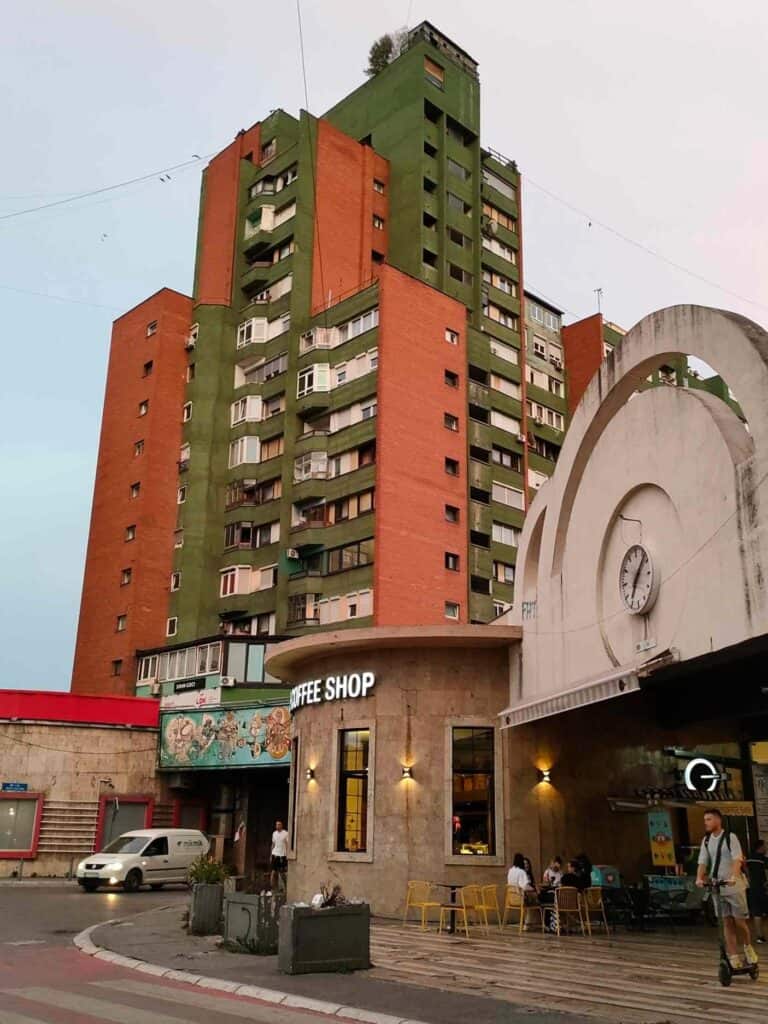
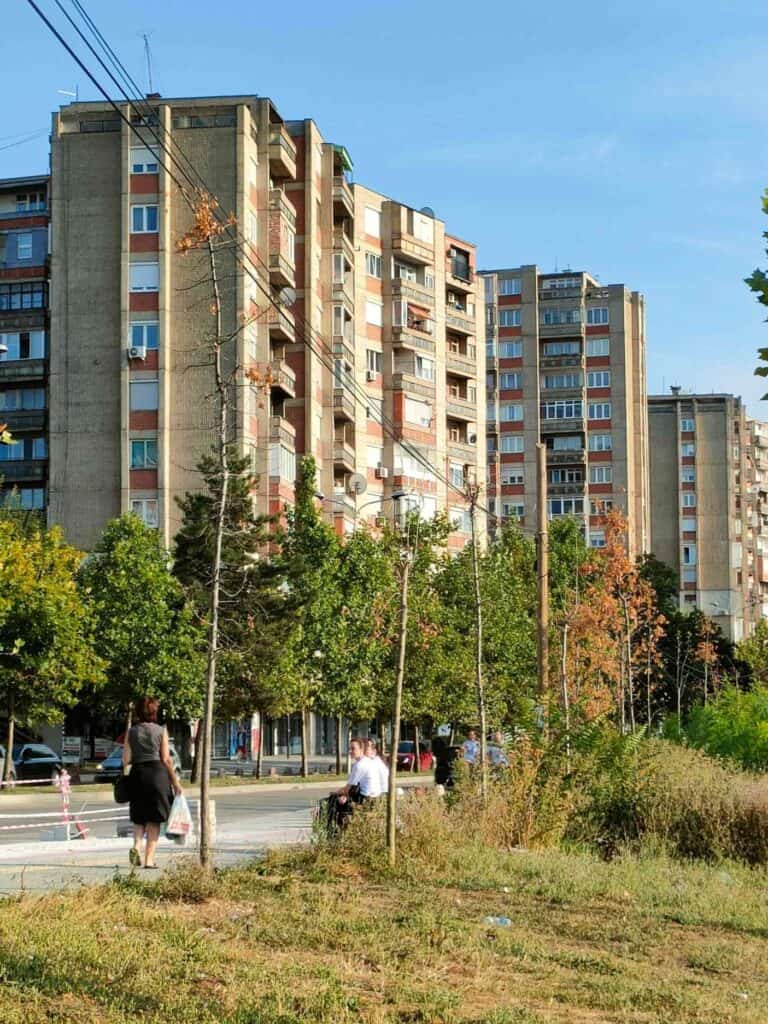
In 1989, Slobodan Milošević, Serb president, revoked Kosovo’s autonomy in the name of Serb nationalism, which led to protests in Pristina and took the lives of 24 people. An inscription on the Skanderbeg Square reminds the passers-by of the events. Kosovo became under Serbian occupation, and tens of thousands of Albanians lost their jobs in the public sphere. In addition, education in Albanian was banned.
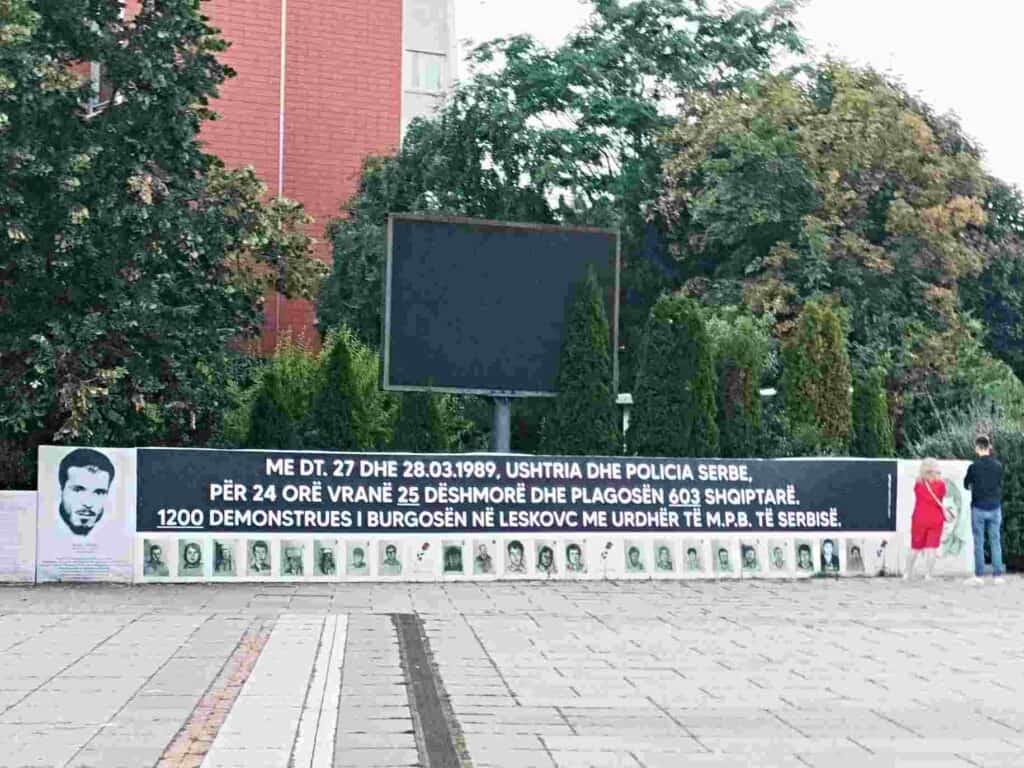
Pristina’s and the country’s modern history is primarily defined by the Kosovo War (from 28th February 1998 till 11th June 1999) that caused the death of 10 000 people. Almost one million Kosovo Albanians became refugees, and 1600 people are still missing. The war ended, but the tensions between the Albanian and Serb populations still exist.
After the Kosovo War of 1998-1999, the UNMIK took over Kosovo’s governance, which was not a legitimate country at that time. Based on special agreements with the respective countries, Iceland borrowed its flag and Monaco its mobile phone code in the absence of a country code for Kosovo. After the war, most urban Serbs and Roma fled Prishtina for fear of reprisal acts.
The UNMIK set up a Kosovo government and handed over governmental authority once Kosovo declared independence on 17th February. Thus, Prishtina became the capital city of Europe’s youngest state.
With thousands of international employees and staff, Pristina experienced an economic boom and enjoyed a cosmopolitan atmosphere with restaurants offering international cuisine and a range of trendy cafés opened.
Is Pristina safe?
Although Kosovo is associated with the war of the 1990s, it is now safe, and even as a solo female traveler you can easily travel around. Although you probably meet Roma children and people begging in the street who can be pushy sometimes. The Serb monuments surrounded by the Albanian population are protected by KFOR (Kosovo Force, NATO-led international peacekeeping force) as these places are more sensitive and can be subject to atrocities. Still, they are safe to visit, but you must deposit your passport during your visit. Around Pristina, such a place is Gazemistan, which commemorates the Battle of Kosovo, that is the core of Serbian history.
How to get around in Pristina?
Most attractions are within walking distance, making it easy to discover the city. As a traveler, it might be more difficult to find out the routes of buses, so another way to get around is by taxi, which is affordable compared to prices in other parts of Europe. For 10 euros, you can get almost anywhere in Pristina.
What is the best time to visit Pristina?
Usually, I prefer visiting places off-season with lower prices and avoiding the tourist crowds, but in the case of Pristina and Kosovo, I enjoyed the bustling nightlife during summertime when it seems that all Kosovars living abroad return to their homeland. So, they are mainly locals, but Kosovo is still less visited by foreign tourists. Pristina’s cafés and bars are packed with locals who are very open to travelers, and many of them speak English or German, sometimes French.
How to spend one day in Pristina
Start your day with a coffee
It might be less known that Kosovo has the best coffee outside Italy, and there is no better place to try that than in one of the trendy cafés of Pristina. You can find plenty of them along Mother Teresa Street, the center of social life in Pristina.
Soma Book Station near Skanderbeg square is a small oasis with an open terrace but closed from the views in the middle of the city. It is special to have a small library inside, hence the name.
Caffez near Mother Teresa Cathedral is another cozy place to start your day.
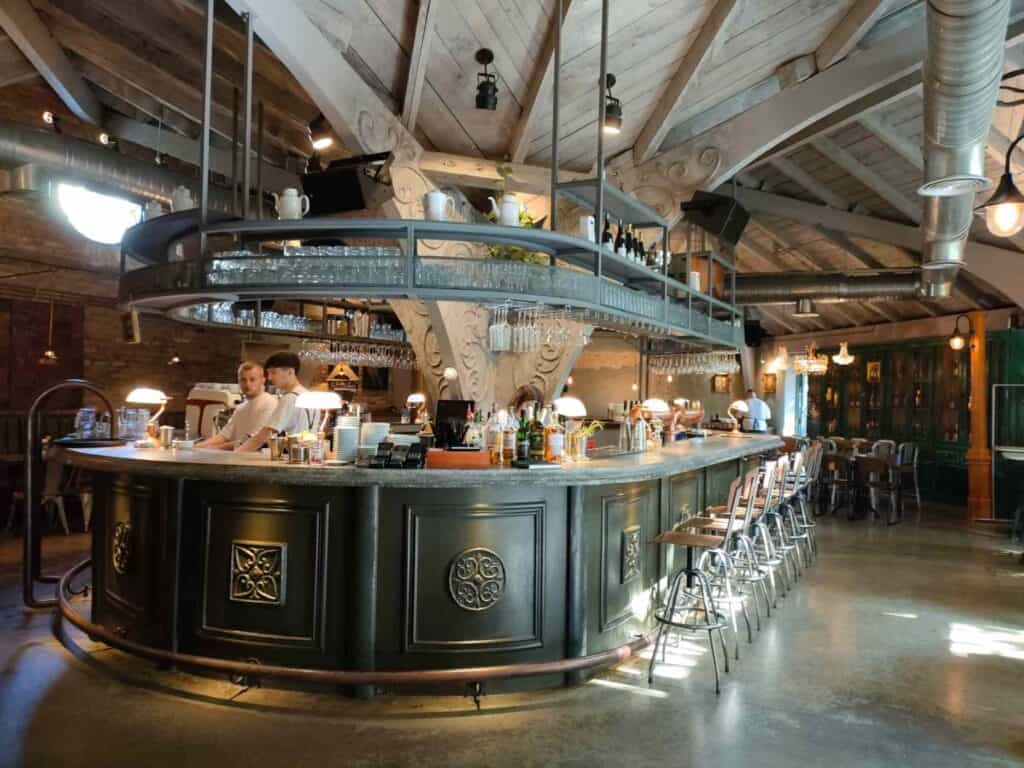
Go on a free walking tour to get more knowledge about Pristina and Kosovo
The best way to get a good basic knowledge of the country, especially if you travel to a less touristic place such as Kosovo, is to go on a free walking tour. Here, you can get first-hand information from somebody who grew up in Kosovo and lived during the war.
It takes 2-3 hours, and apart from visiting the most important monuments of Pristina, you get tips on where to eat and what else to include in your itinerary in Kosovo.
You can sign up for the free walking tour here.
Newborn monument
One of the must-see sights of Pristina stands in front of the unique-shaped Palace of Youth and Sports. It was initially named Boro and Ramiz after two partisans, an Albanian and a Serbian, symbolizing the brotherhood and unity of Albanians and Serbs.
The Newborn Monument was set up on 17th February 2008, when Kosovo declared independence from Serbia. First, it was painted bright yellow, but on the 5th anniversary, it was decorated with the flags of all the countries that recognized Kosovo’s independence. Since then, it has had a new design every year.
In 2023, even the order of letters was rearranged to “NoNewBorn” and bears the color of Ukraine, referring to the war.
War memorials in Pristina
Unlike Bosnia and Herzegovina, the traces of the war are not much seen, but memorials are scattered around the city and the country.
Just opposite the Newborn monument is the “Heroines” memorial, made up of 20 145 coins arranged in the shape of a woman’s face. It reminds me of the number of Albanian Kosovar women who were victims of rape during the war.
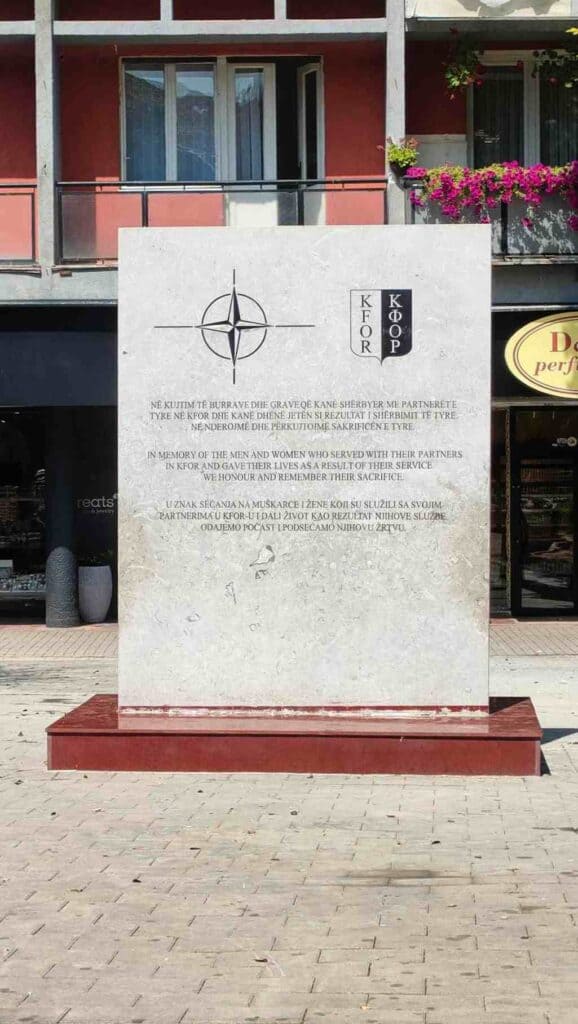
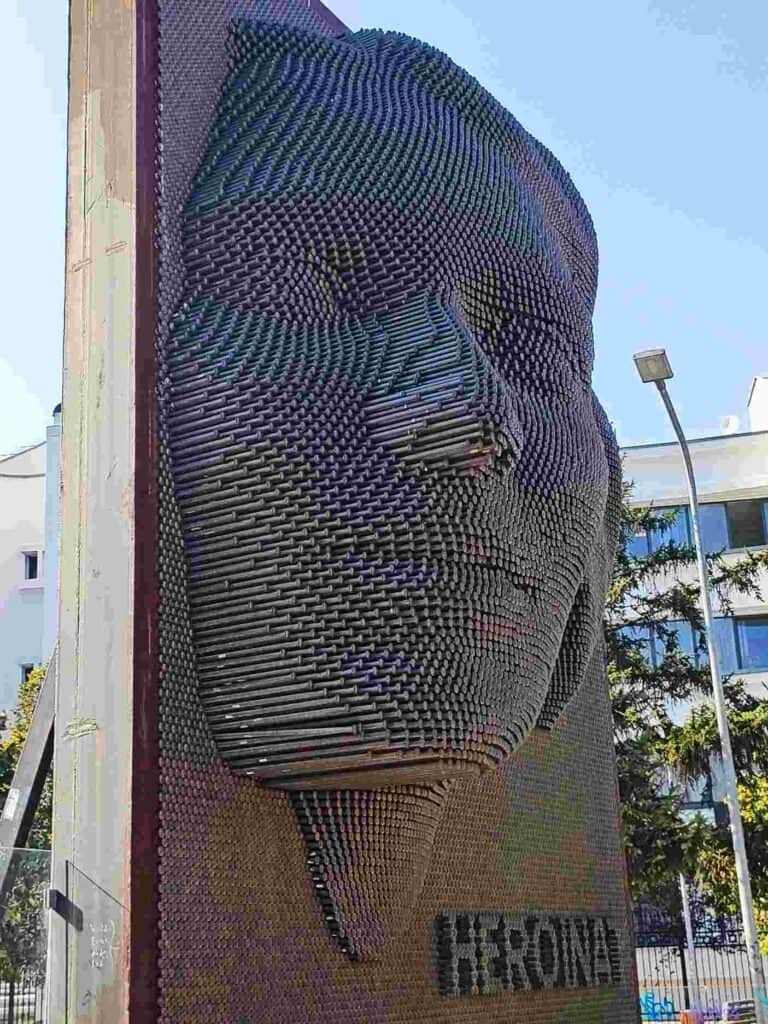
Along Mother Teresa street, you find a memorial expressing gratitude for the KFOR, the NATO-led international peacekeeping force in Kosovo that has operated since the end of the war (11th June 1999) when Kosovo was plunged into a deep economic crisis.
Another memorial remembers the 1600 people still missing after the war close to Skanderbeg square. It means that some families cannot find peace and never give up the hope that their family members will return one day.
National Library of the University of Kosovo
Some say it is one of the ugliest buildings in the world, but anyhow, it attracts attention. The library, located on the premises of the University of Pristina, is covered with 99 domes of different sizes and combines Byzantine and Islamic architectural designs. During the Kosovo war, many refugees from Croatia and Bosnia found refuge here after fleeing their countries. After NATO’s intervention in 1998, it turned out that the Yugoslav army used it as a command-and-control center, and approximately 100 000 books were stolen or burnt, many of them invaluable sources about Kosovo’s history.
It is also worth visiting the library inside; anybody can enter the hall that has unique geometrical decoration. You also have a good view of the Cathedral of Mother Teresa from the National Library.
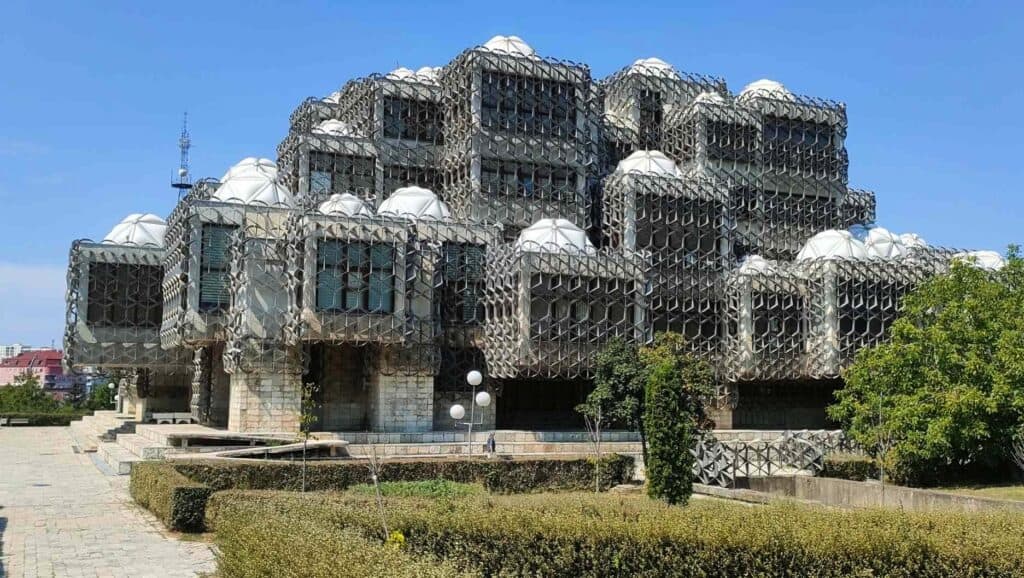
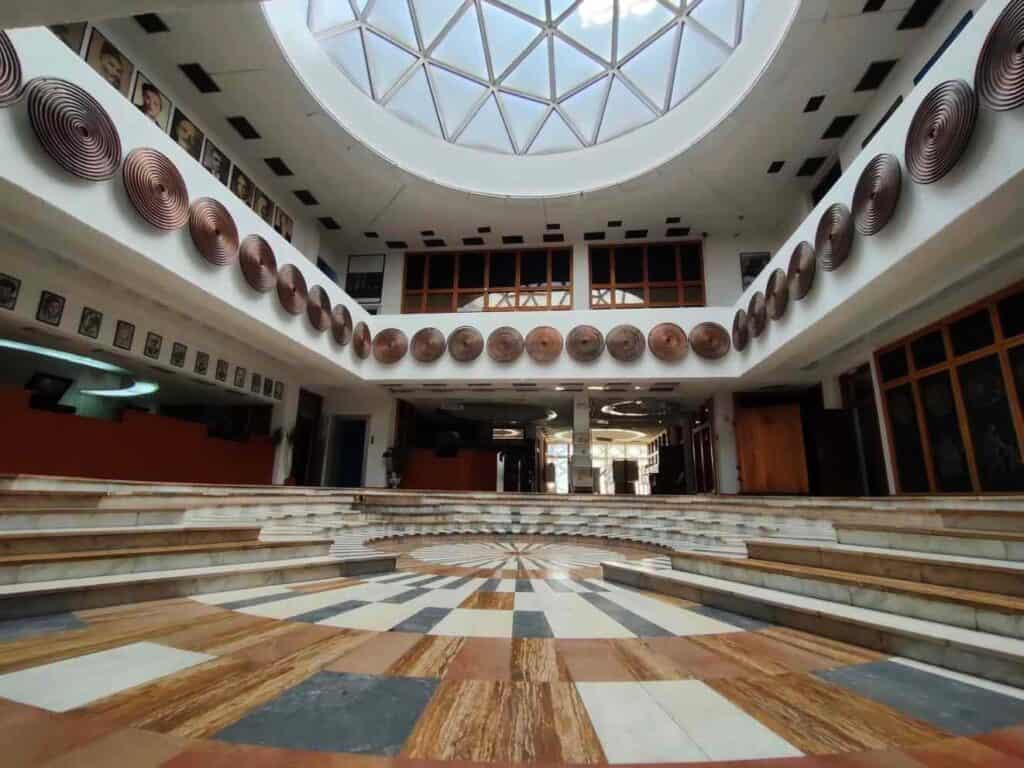
The University of Pristina also carries an important role in Kosovo as the principal public higher education institute. It was opened in 1969, and for the first time, Albanians could pursue higher education in their language, which attracted many Albanians living in south Serbia and Macedonia.^
The University was the venue of the student protests in March 1981 that started with demanding better conditions in the student residences and turned into violent protests spreading over the country.
During the Serb occupation (1990-1998), many Albanian lecturers were dismissed, and there were severe debates about how to share the control of the University between the different ethnic groups. By the end of the Kosovo War most students and lecturers fled Kosovo, and the University disintegrated. It was considered a historic event when, due to ethnic differences, it was reestablished in 1999. The University was split into two branches, one in Pristina and one in the Serb northern part of Mitrovica.
The controversial unfinished Serb Orthodox Church
Next to the National Library of Kosovo a massive unfinished Serbian Orthodox church stands there as a reminder of the war when Serbia occupied Kosovo and a political symbol. The construction started under the Serbian president, Milošević, in 1992 but stopped in 1999 when the Kosovo war ended. It was meant to be the biggest church in Kosovo, built provocatively on the premises of the University of Pristina, manifesting the Serb power. They say once a cross is placed on top, it cannot be demolished, so the church’s future is uncertain and may be used for other purposes. There are plans to convert it into a museum of Serb occupation.
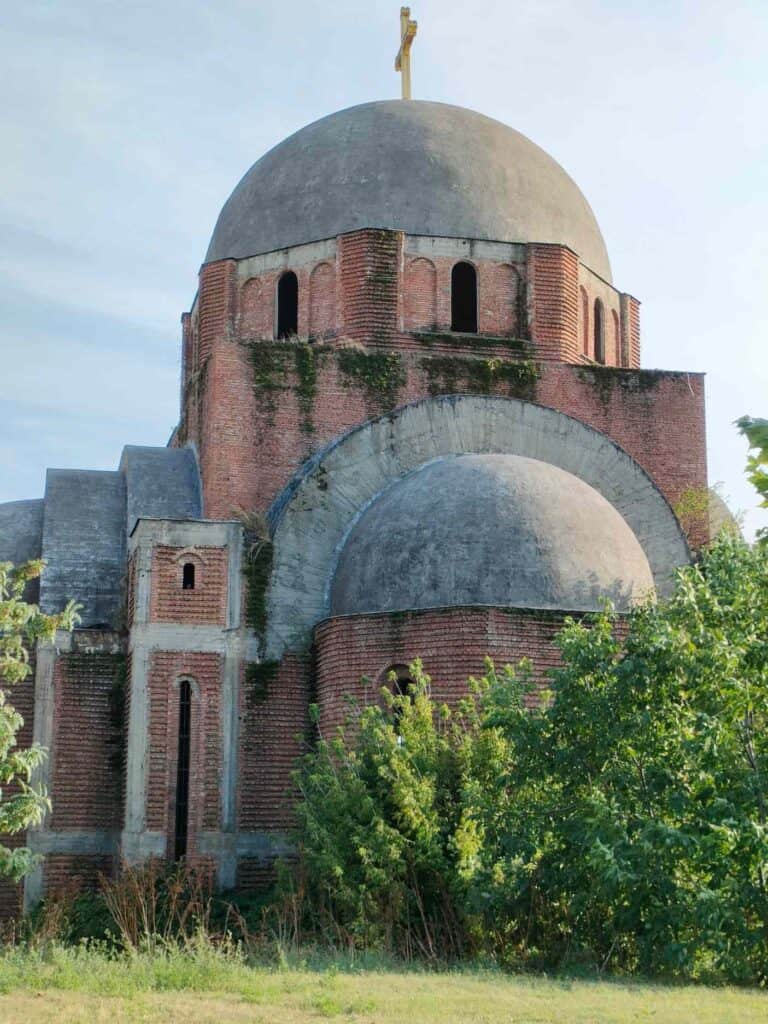
Climb the bell tower of the Mother Teresa Cathedral for the best view of Pristina
The only cathedral of Kosovo and the tallest building in Pristina with its 70-meter-high bell tower defines Pristina’s skyline. It is the only church in the world dedicated to Mother Teresa, the Catholic Albanian nun who carried out missionary work in the slums of Calcutta. President Rugova, himself a Muslim, laid its foundations.
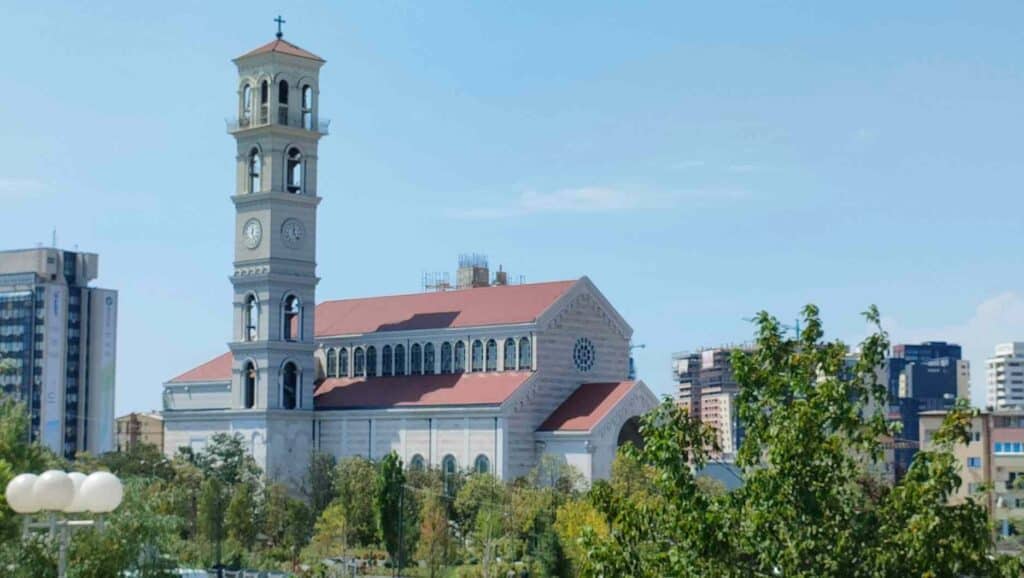
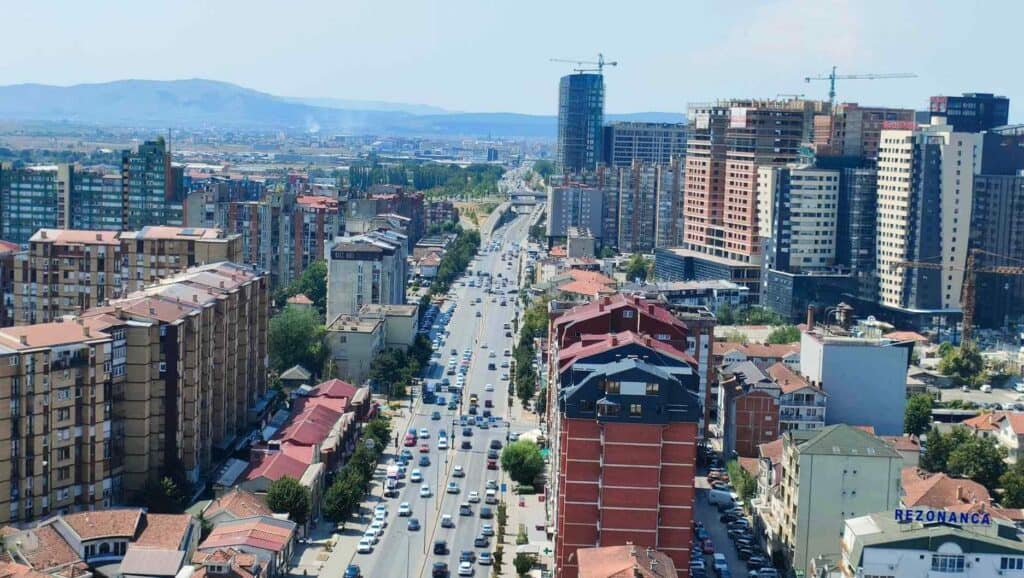
Strangely, such a massive cathedral was built in a majority Muslim country where Catholics only comprise a few percent of the population. Still, it is meant to symbolize the peaceful coexistence of the different religions. The cathedral was inaugurated exactly 20 years after Mother Teresa died on 5th September 2017.
Statue of Bill Clinton
The statue of the former US president stands along the Boulevard also named after him. It may seem peculiar that American flags fly at many places in Kosovo, but this is how Kosovars express their gratitude to the United States, who ended the war after bombing the Yugoslav army’s installations in Kosovo for 78 days. Madeleine Albright, his foreign minister then, had a crucial role in convincing Bill Clinton to intervene. The statue was erected ten years after the events.
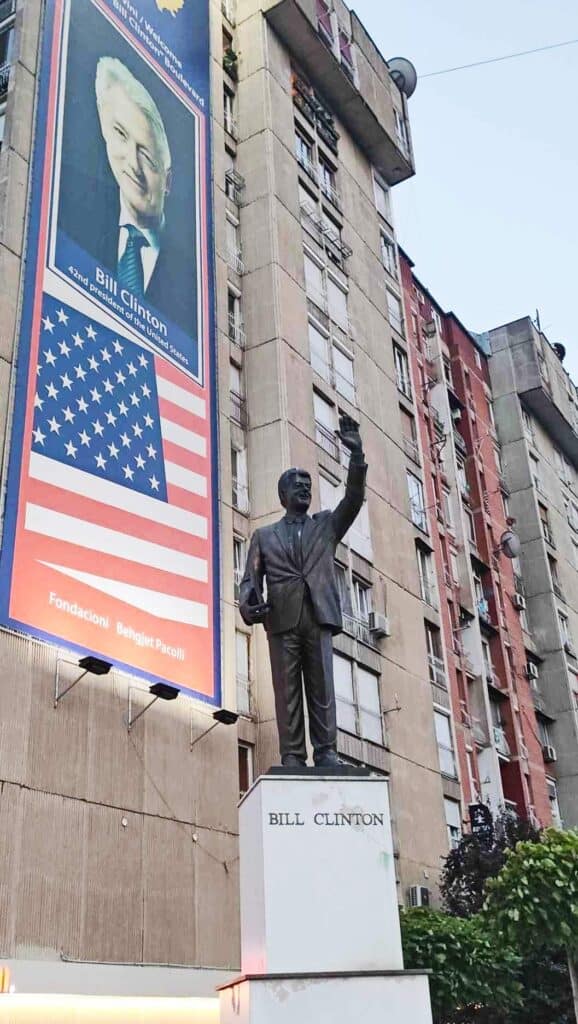
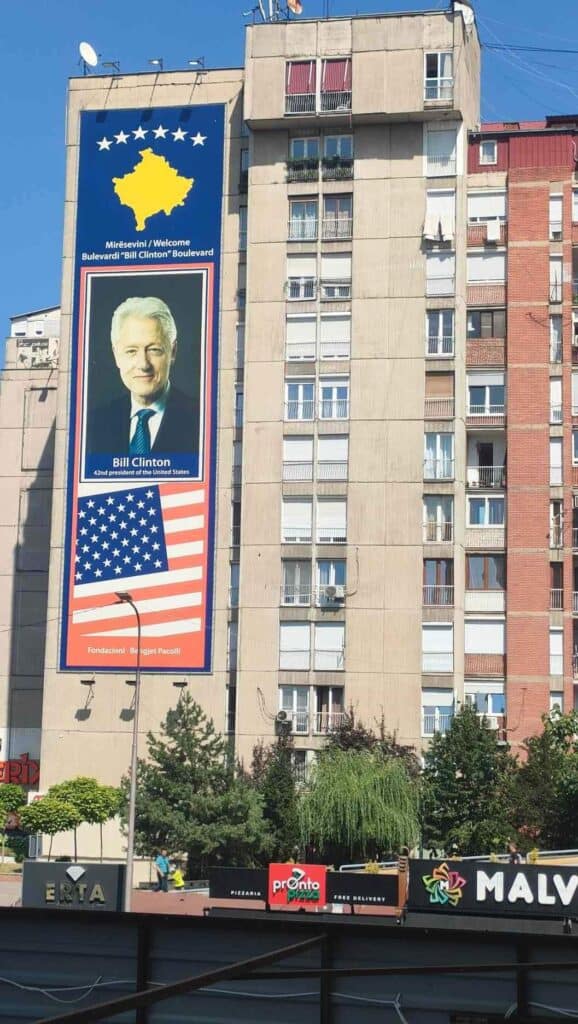
Monument of Brotherhood and Unity
The monument was set up in 1961 to commemorate the partisans who lost their lives during WWII. The eight cubic-shaped bronze statues in front of the triangle-shaped memorial symbolize partisan soldiers. It is painted into the colors of different NATO member countries that helped Kosovo get liberated from the Yugoslav army’s occupation during the Kosovo War.
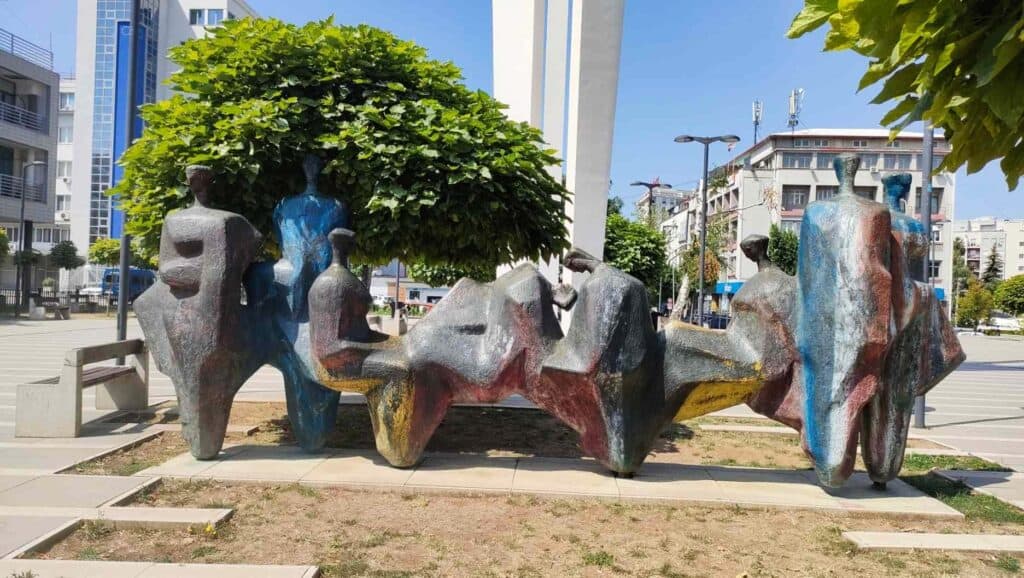
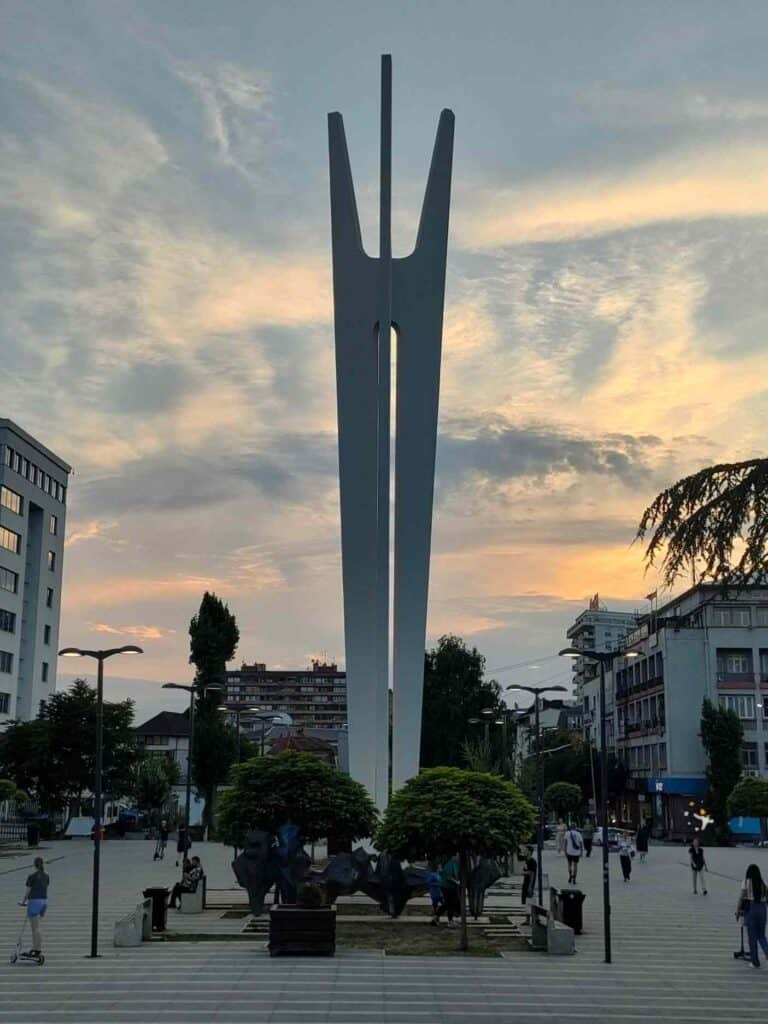
Skanderbeg square
The Skanderbeg square is the center of Pristina’s social life, where the famous Mother Teresa pedestrian street starts. In the evenings, it gets packed with locals, young and old, making it the liveliest part of the city. In the center of the square stands the equestrian statue of Skanderbeg, the most famous Albanian medieval hero, like in Tirana. It was symbolically put up on the Albanian National Day, 28th November in 2001. This is an example for how the statues of Serbian heroes were systematically replaced with Albanian ones in Kosovo. Some remarkable buildings around the square are the government buildings, including the Parliament of Kosovo and the National Theatre.
Close to the Skanderbeg square stands the statue of the highly respected former president, Ibrahim Rugova. He is often called the Gandhi of the Balkan for choosing non-violence to fight for Pristina’s independence, although he was criticized for the same reason.
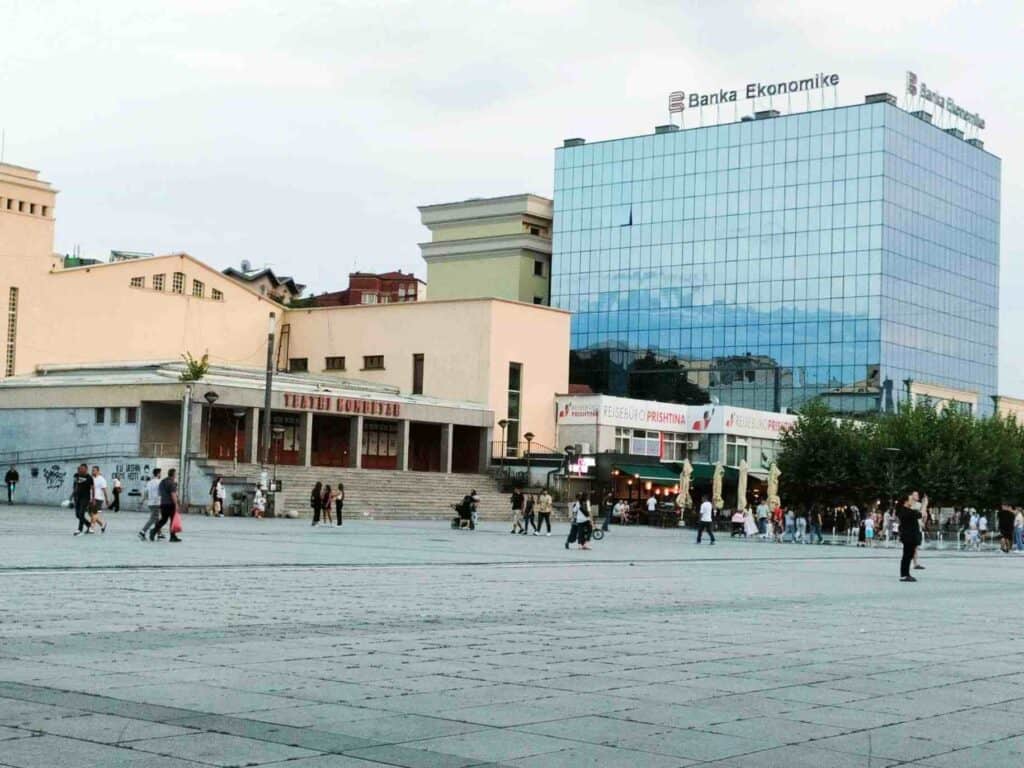
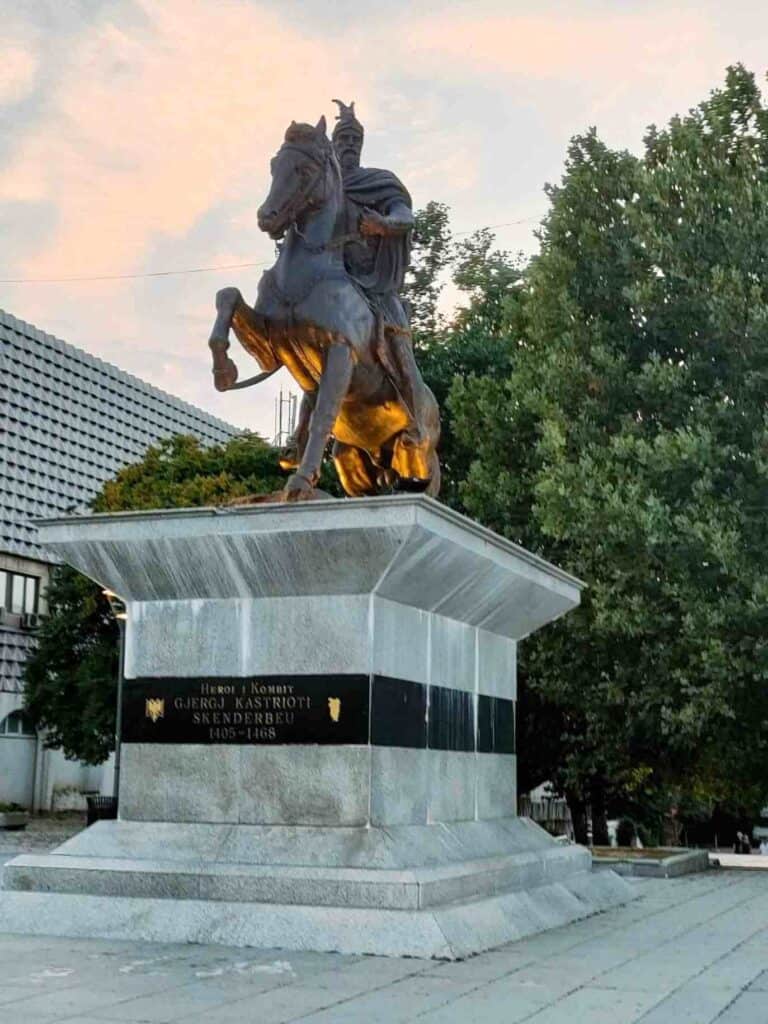
Who was Skanderbeg?
Born Gjergj Katriot in 1403, he was the son of an Albanian noble subdued by the Ottomans and sent to Istanbul as a hostage. There, he was converted to Islam, fought alongside the sultan, and took the name Skanderbeg from the Turkish Iskender Bey, “Alexander the Great”. In 1443, however, back in Albania, Skanderbeg turned against the Turks, converted back to Christianity, and liberated large parts of what is today Albania. It is ambivalent that most Albanians were Muslims when he was celebrated as a national hero. He is considered by historians as one of the four best generals and strategists of the world after Alexander the Great, Julius Caesar, and Napoleon Bonaparte. He symbolizes bravery, loyalty, wisdom, and the unification of the Albanian nation.
Over the years, Skanderbeg sometimes allied with Serbian princes and but other times fought against them. He fitted the ideal that religion did not define what it meant to be Albanian.
The Albanian flag, a red banner with a double-headed eagle, is believed to have its origins in the seal of Skanderbeg.
Watch the people and mingle with locals on Mother Teresa Street
As mentioned, Pristina is not an especially beautiful city, but its liveliness, cozy cafes and restaurants, and vibrant nightlife make you feel good in the capital of Kosovo. Young and old, families and friends all come to spend their time here. You will find plenty of good restaurants and café here.
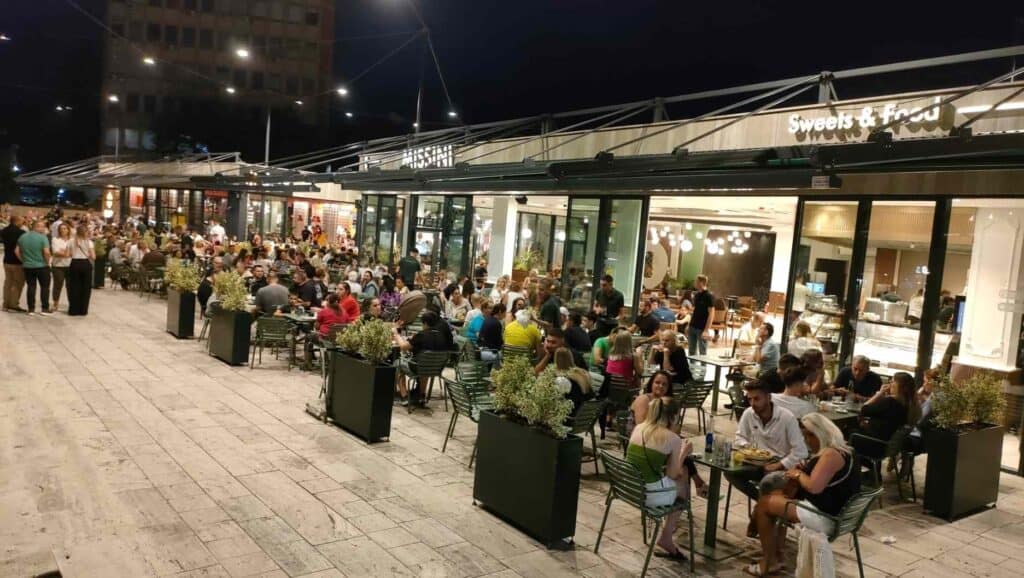
Visit the Ottoman heritage of Pristina
Pristina was a flourishing trading town with several shops. Apart from the mosques, not so much is left from the Ottoman period. The Ottoman part starts at the Çarshi Mosque, also known as the Bazaar Mosque, Sultan Murat Mosque, or even Taş Mosque, opposite the Monument of Brotherhood and Unity on the Adem Jashari Square. It commemorated the Battle of Kosovo in 1389 when the Ottoman troops defeated the Serbs. It is called Taş Mosque (Stone Mosque) after its stone-topped minaret.
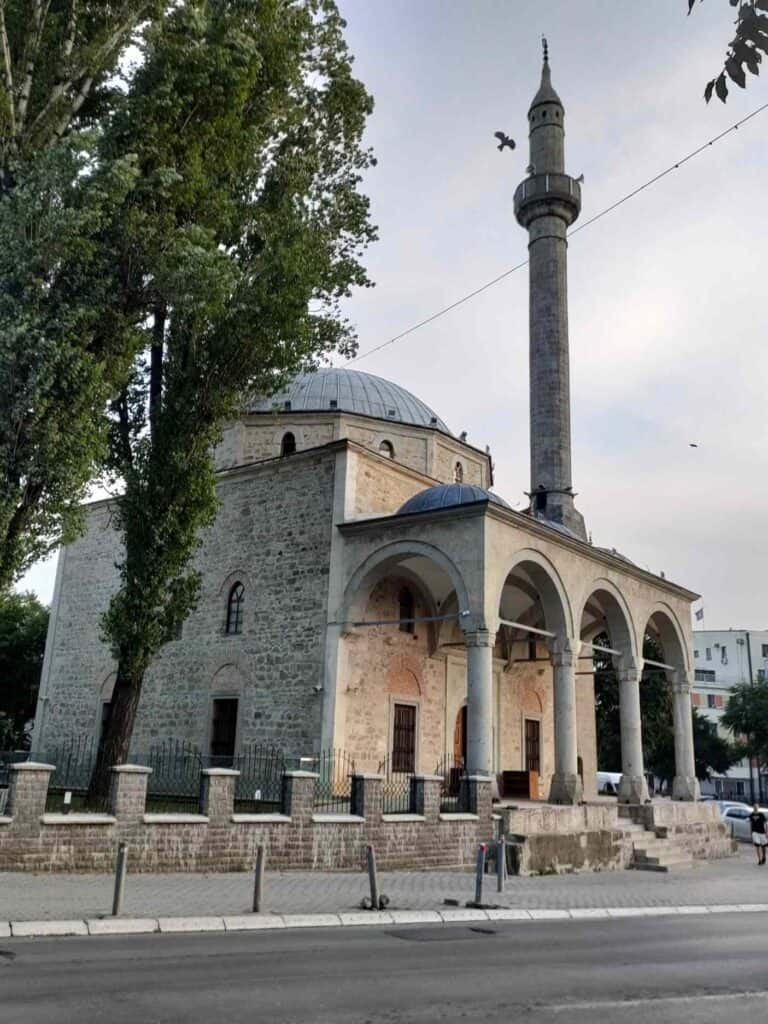
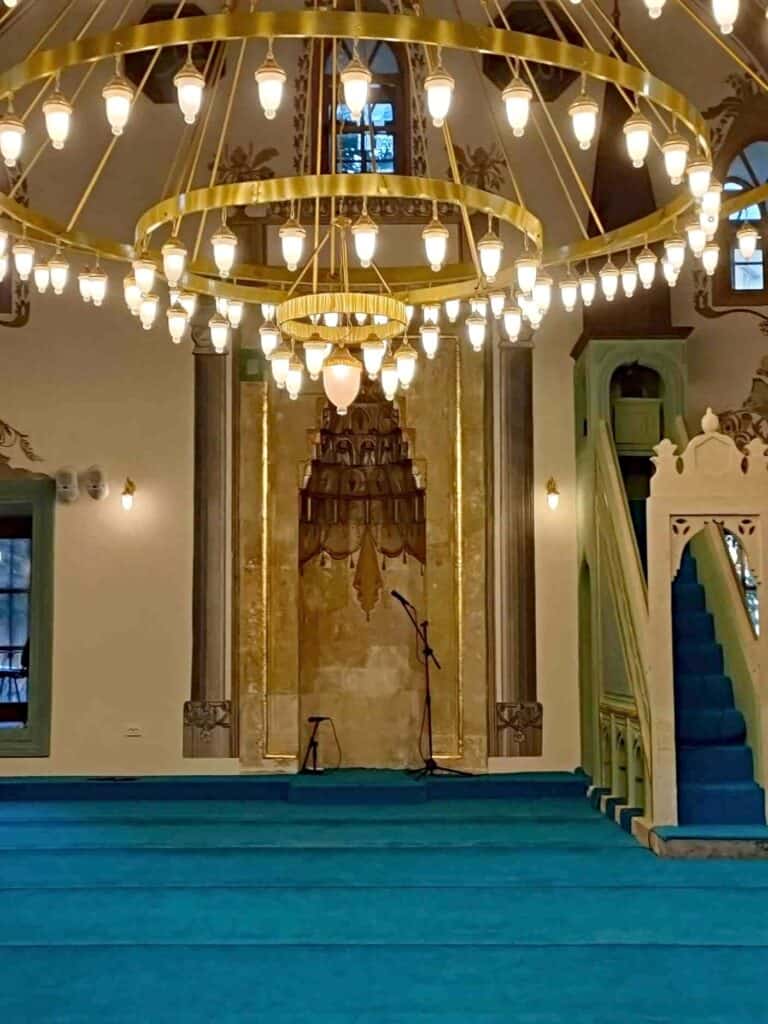
Close to the Sultan Murad Mosque is the Kosovo Museum, which has a section of the archeological findings. The most valuable items on display are the terracotta figures of goddesses; some are 7-8 thousand years old. This you will come across in the souvenir shops as well. I expected more from the Kosovo museum, but apart from a range of weapons and appreciation of the US for its intervention in the Kosovo War, and there is little about the war of the 1990s. The most valuable part of the Kosovo museum is the 7-8,000-year-old terracotta figure of a goddess that you can see in souvenir shops.
Opening hours: 10-17.00; Monday closed
Entrance fee: free of cost
Right after the Kosovo Museum along the main road, you will pass by the Jashar Pasha mosque before getting to the even more impressive Imperial or Sultan Mehmet Fatih Mosque, built in 1461 by Sultan Mehmed II.
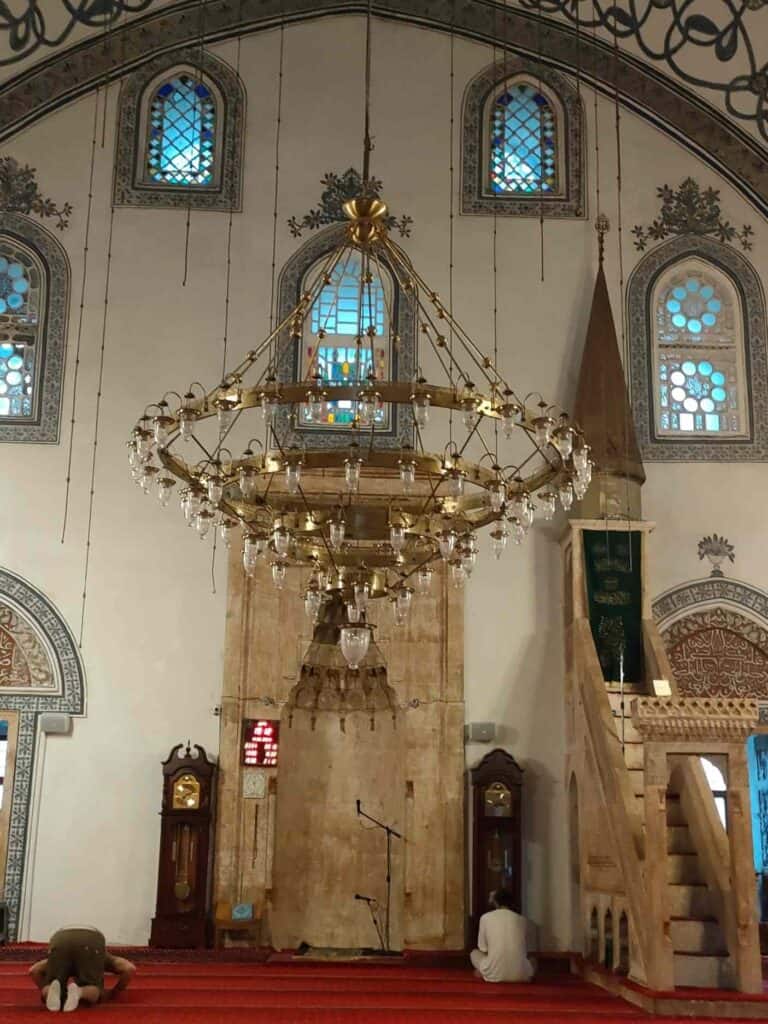
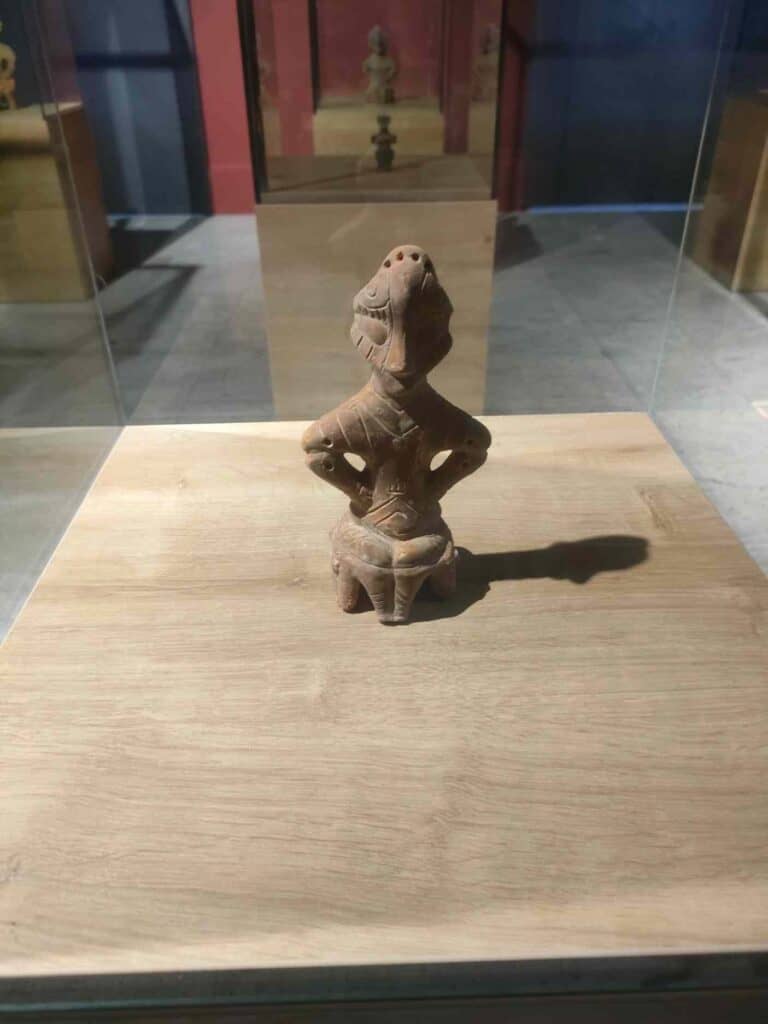
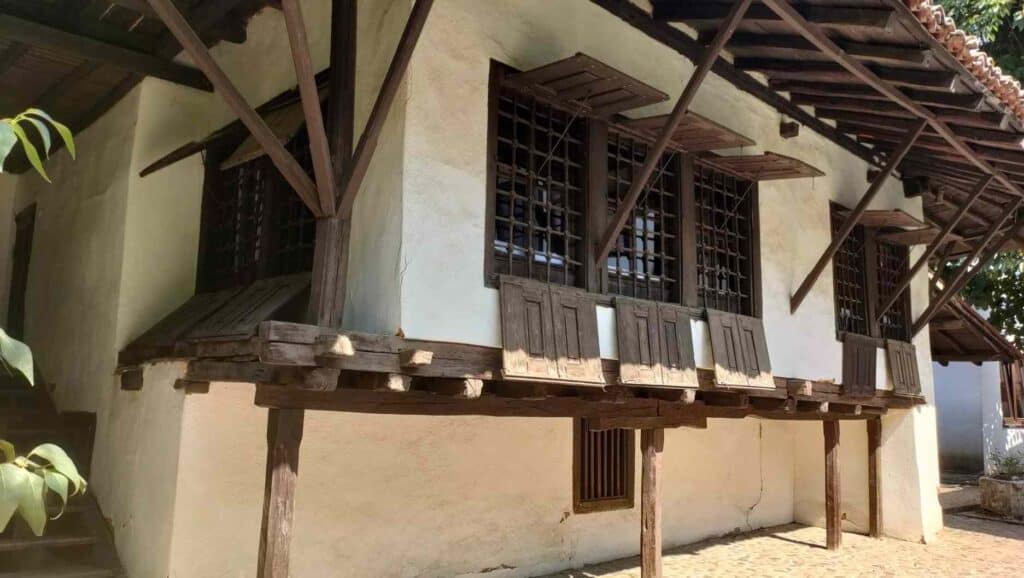
Within a short walk, you get to the Ethnography Museum, which gives an insight into how people lived during the Turkish times. However, my visit to the ethnographic museum was interesting for something else. Besides providing detailed explanations about the museum, the museum’s guide, who speaks perfect English, also shared his family’s story during the war.
In the Ottoman area, don’t forget to visit the market of Pristina, where you can buy mainly clothes, vegetables and spices.
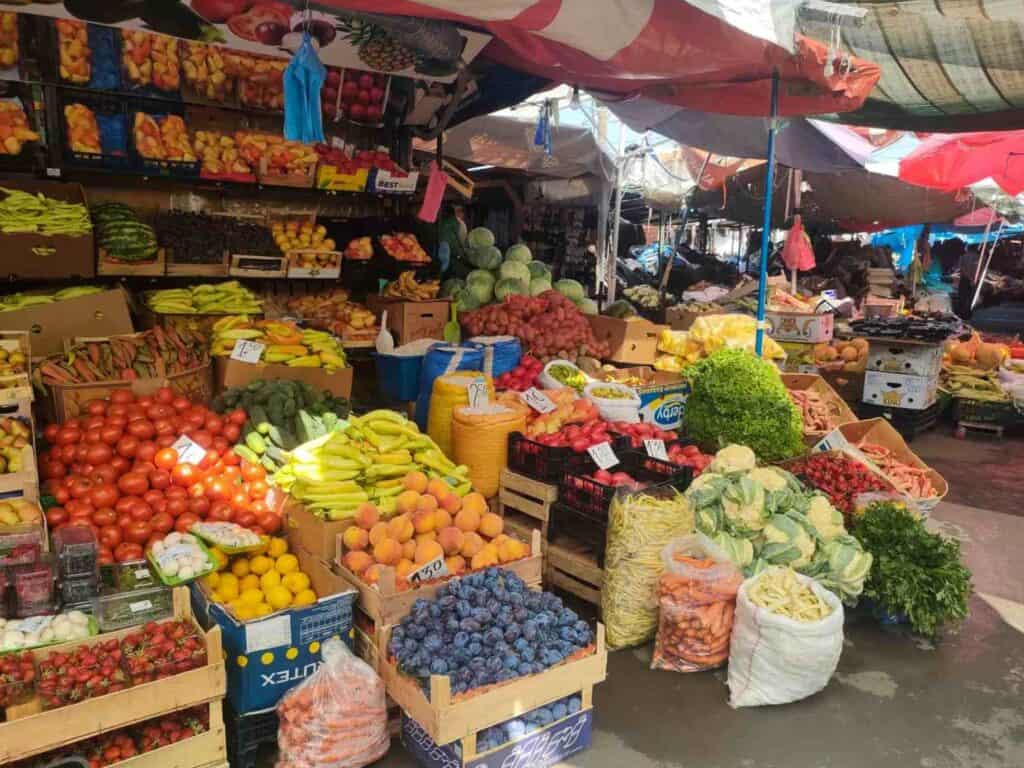
What to eat in Pristina
Pristina is a great place to try Albanian cuisine, but thanks to the influx of international staff after the war, there is also a wide choice of international restaurants. If you want to try Serbian cuisine, head to the nearby Serbian town, Gračanica, where the famous Orthodox monastery is also found.
As I said, it is not the monuments but its nightlife and cozy places that make you like Pristina.
Given that half the population is under 20, it is no wonder that there is a huge demand for cafés and bars. Muslim or not, most young Kosovars do drink alcohol, and there are only a few places that do not serve it. Still, drinking too much is frowned upon.
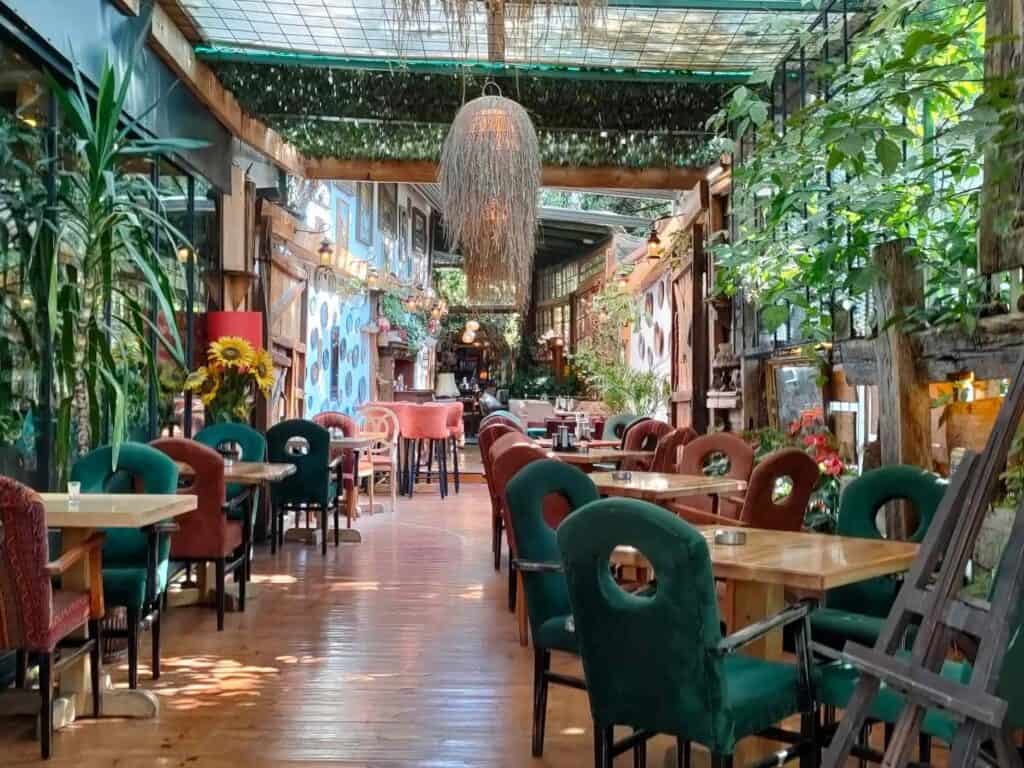
The most popular places are found
– along the Mother Teresa street
– the 2 Korriku, also called “Rakia Street”
– Rr Rexhep Luci (known as ‘ABC Cinema Street’)
– the Qafa district, a few minutes walk from Skanderbeg Square towards the Stadium
– the area around Pejton next to Mother Teresa Cathedral.
Try burek, a pastry filled with meat, spinach, or cheese for breakfast.
Flija is a pancake with several layers placed on each other.
The grilled minced meat Qebapa (Ćevapi) is the most popular dish in many restaurants.
Sarma is minced meat, veggies, and rice rolled in cabbage leaves or vine leaves.
Best restaurants and cafés in Pristina
Taverna Tirona/Tirana
Shpia e Vjeter
Pishat
Me lugë
Soma Book Station
Caffez
Where to sleep in Pristina
Low Budget:
Mid-range:
Hotel Uniluxory: great value for money, this hotel offers clean and spacious accommodation with friendly staff and good location for an affordable price
High-end hotels:
Hotel Ambassador: Once one of Prishtina’s only luxury hotel is still a still affordable accommodation for high-class comfort
Hotel Garden: 3 km from center, upmarket hotel popular among international staff, especially known for its two good restaurants.
Swiss Diamond Hotel: During Yugoslav times it was the most luxurious hotel in Pristina. Marshal Tito himself stayed twice in Room 104. During the 1990s, it was temporarily used to house refugees from the Yugoslav wars and was a budget location until being purchased and renovated by Pacolli former president and businessman, who is believed to be the world’s richest ethnic Albanian.
What to see around Pristina
Gazimestan and Gračanica Monastery are only a few kilometers from Pristina that you can easily include in your sightseeing in the capital.
Gazimestan, Monuments to the Battle of Kosovo
The Memorial Tower stands some kilometers from the actual scene of the Kosovo battle, the core of Serbian history that created several legends and folksongs. Serbs celebrate 28th June as a national holiday, although according to historians, the actual battle took place on 15th June 1389, where the highly respected Prince Lazar met the troops of Sultan Murad I, Ottoman ruler, on the Kosovo fields and was defeated. The memorial tower has a Serb inscription that calls all Serbs to sacrifice their lives to defend Kosovo.
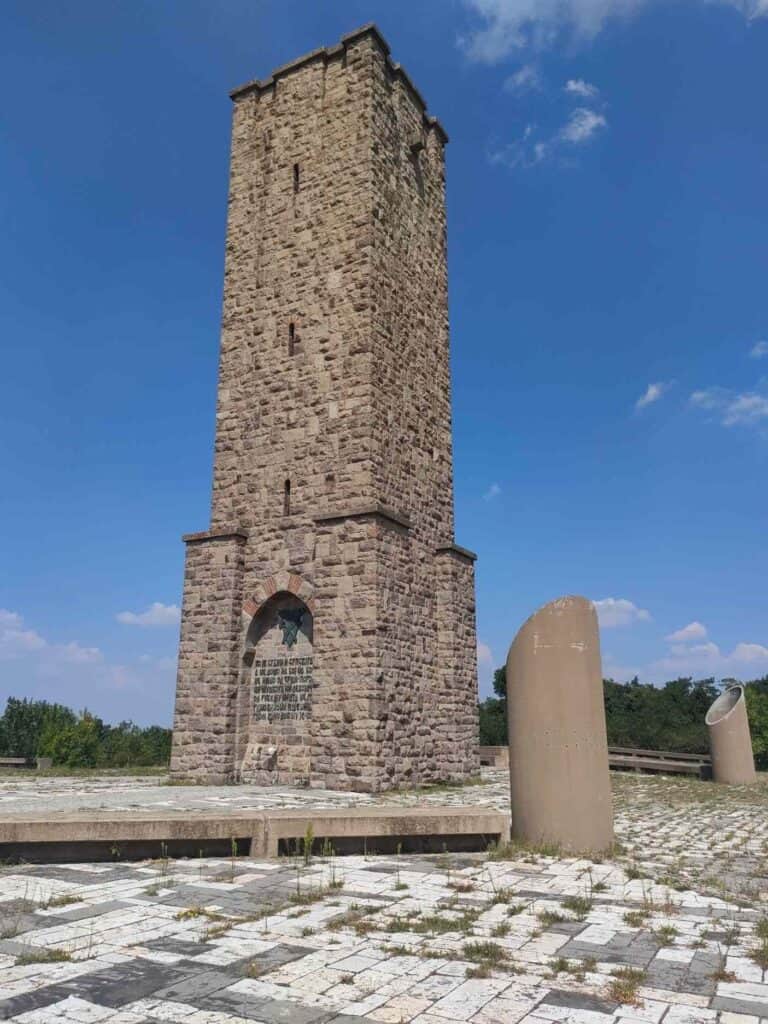
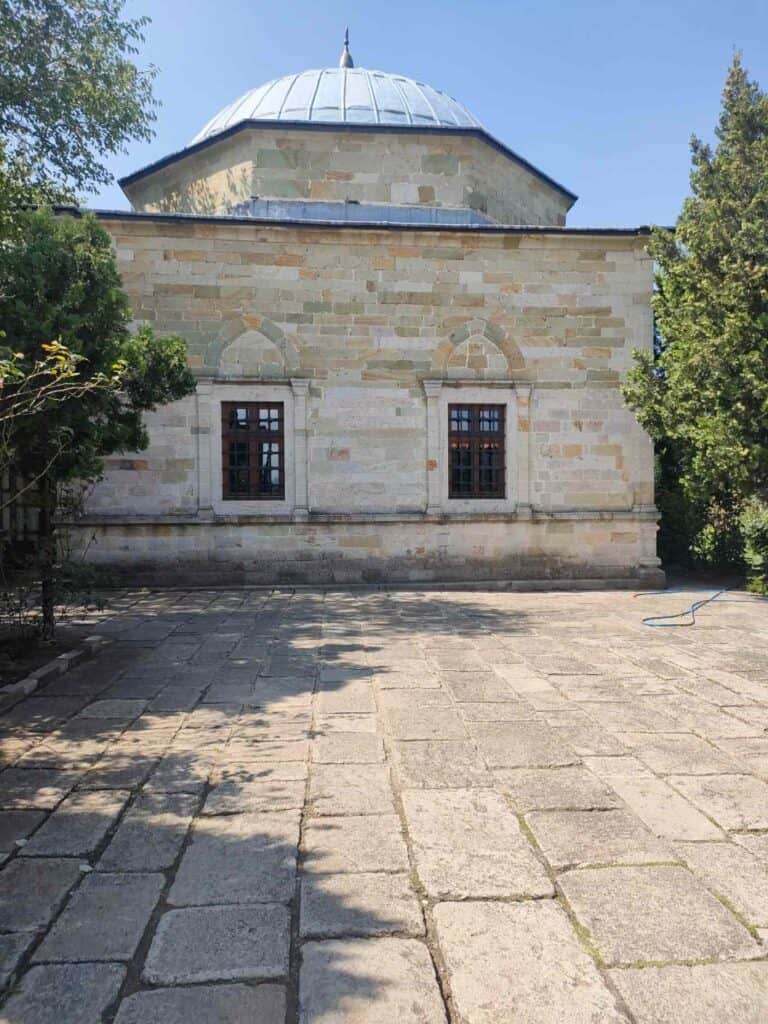
The Kosovo myth is a series of legends created around the Battle of Kosovo that builds Serbian national identity. According to that, Prince Lazar gave up his victory and earthly power as a martyr so that Serbs could get a place in the heavenly kingdom. In contrast to Lazar’s immaculate character, his partner Vuk Brankoviç, the feudal lord who controlled most of Kosovo, is presented as a traitor who helped the sultan defeat Lazar, for example, by withdrawing bibs troops in crucial moments. But the truth is that he did fight alongside Lazar till the end. Sultan Murad was assassinated by Miloš Obilić, a Serb night who served Prinze Lazar to prove his loyalty. He announced to take the Turkish side in the battle, and when he was in their camp and kneeled in front of the sultan, he stabbed him with his drag.
The Lazar legend was revived in the 19th century, and the modern narrative made an integral part of Serb history and served as a basis to proclaim the new Serbian kingdom in 1882. According to that, the battle ended the glorious medieval Serbian state and led to a long-lasting Ottoman occupation and slavery. Thus, Serb identity is largely defined by the defeat against the Turks as rebels and martyrs.
Six hundred years later, on the same day, Slobodan Milošević gave his famous controversial Gazimestan speech in which he said: “Today, six centuries later, we are again fighting a battle and facing battles.” This probably started the disintegration of Yugoslavia.
Serb and foreign visitors visit this highly important place in Serbian history. Like other Serb monuments and monasteries close to Albanian regions, it is also protected by KFOR guardians who ask you to deposit your passport during your visit.
The Memorial Tower is the central part, but if you want to visit the two other parts of the complex, head to the Bajraktar Türbe and the mausoleum of Sultan Murad. They are both a short drive from the tower.
Sultan Murad’s standard bearer (bajraktar in Turkish) died during the battle. He belonged to the Sadije dervish order, and the followers of this order often come to his tomb. It is believed to be on the same spot where Sultan Murad died, and his camp was set up.
Sultan Murad’s mausoleum is a short drive to the north from the memorial tower. His remains were first sent to Bursa. The current mausoleum has been in Kosovo since 1850 and is traditionally guarded by one family, in which this duty passes from generation to generation. They live next to the mausoleum.
How to get there?
It is an alone-standing tower located a few kilometers outside Pristina on the main Prishtina–Mitrovica highway. You could take a bus to Mitrovica and ask the driver to drop you from where it is a short walk. But on the way back, it is hard to flag the bus, and taxis are unavailable. The best way to get there is with a car. A taxi ride costs 15 EUR to visit and return to Pristina with the driver waiting for you.
Gračanica Monastery
Gračanica is a Serb enclave located only a few kilometers from Pristina. Before the war, it was a sleepy village that developed into a town of around 10 000, mainly inhabited by Serbians who fled Pristina after the war. You will see Serbian flags and a bridge painted in Serbian colors when you arrive. Several restaurants offer Serbian meals, and locals speak Serbian. As a tourist, I didn’t feel much difference; people were equally helpful as in Pristina.
The monastery built in the 14th century on the ruins of a church is a UNESCO World Heritage as one of the “Medieval Monuments in Kosovo”. It is considered one of the best preserved examples of late Byzantine architecture in the world.
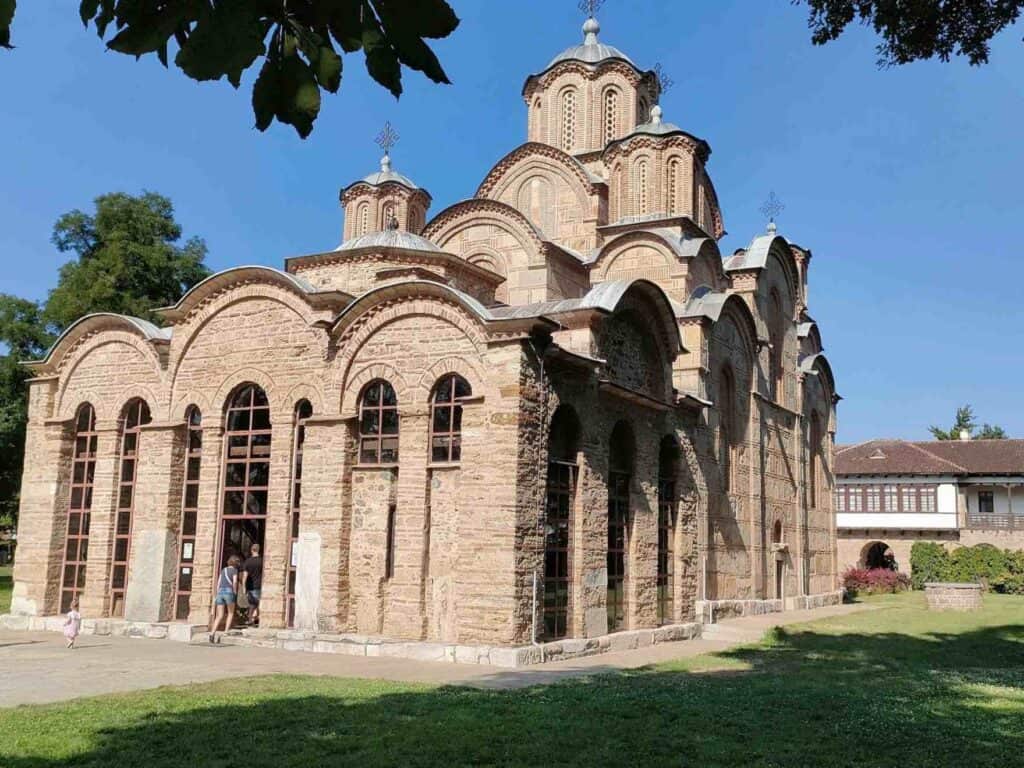
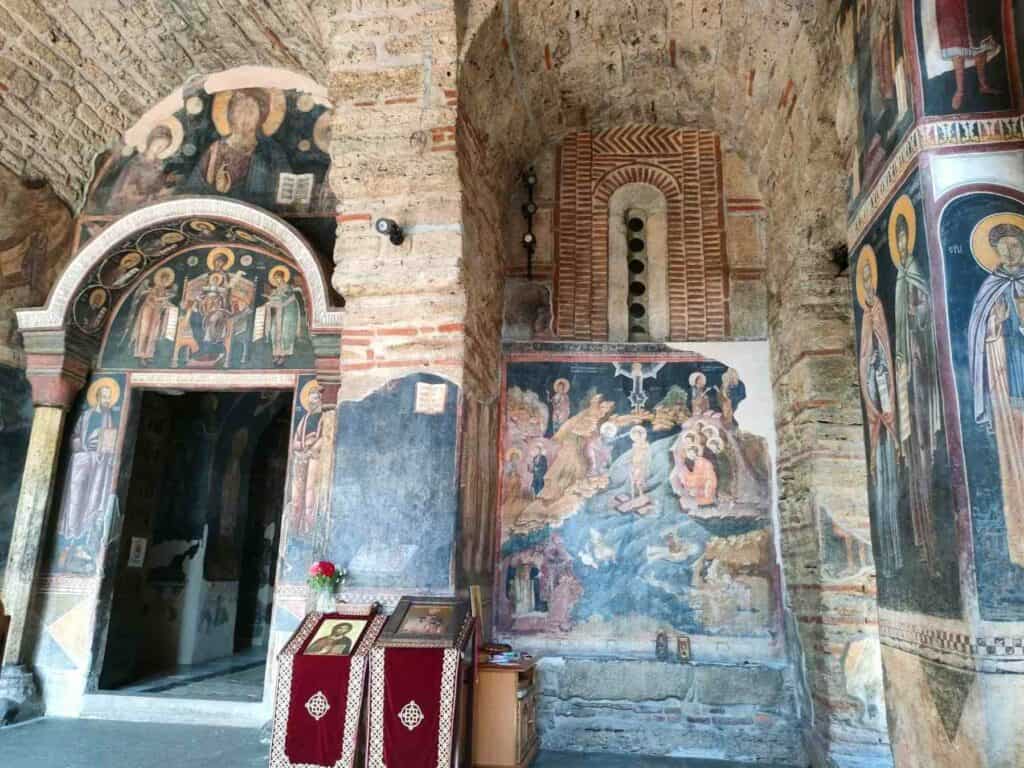
The monastery was rebuilt by nuns after WWII, and since then, it has been a convent. The nuns living here pursue agricultural activities, icon painting and sewing. Only the church survived from the monastery, with a stunning fresco decoration. During the Kosovo War in 1999, NATO air forces bombed the complex. After the war, the seat of the Bishop was moved from Prizren to Gračanica, making it the most important spiritual center in Kosovo for the Serb community besides being their main political and cultural center.
King Milutin of the Nemanja dynasty founded the monastery in the 14th century, which is classified as a UNESCO World Heritage where a couple of nuns still live. As always, these Serb Orthodox Churches’ interior has lively, colorful interior decoration.
Apart from the monastery, the statue of Miloš Obilić, the Serbian knight who served Prince Lazar during the Kosovo Battle, also stands in Gračanica. Just follow the signs once you arrive. Finish your stay by having lunch or dinner in a Serb restaurant like Etno Shpia, a cozy traditional restaurant.
Visiting Gračanica makes a perfect half-day trip from Pristina.
The entrance to the monastery is free of cost.
Where to stay?
You can easily visit Gračanica from Pristina during the day, but if you want to stay there, then Hotel Gračanica is probably the best choice, with employees carefully selected from both Albanian and Serb ethnic groups.
How to get there?
There are regular buses to Gjilan that pass by Gračanica. It is a short walk from where you get off the bus along the principal road.
On the way back, you should walk back to the bus stop at the same big curve on the other side and wait for the bus. Several buses are heading to Pristina, passing Gračanica, so you probably don’t need to wait more than 15 minutes, except for Sundays when public transport is much less frequent.
Half-day trips from Pristina
Gračanica, Ulpiana, Janjevo
Besides visiting the Serbian Orthodox monastery, you can head to Janjevo, with beautiful half-timbered houses with a primary Croatian Catholic population.
Ulpiana is an ancient Roman town, once one of the biggest in the Balkans, that the Slav invaders destroyed in the 6th century.
Bear Park and Novo Brdo
You can combine visiting Bear Park with Novo Brdo, the medieval city with the biggest silver mine of medieval Serbia and the fortress that tops the hill and is probably the next UNESCO World Heritage of Kosovo.
Full Day trips from Pristina
Prizren and wine-tasting
Prizren is the most beautiful city in Kosovo, which has the most extensive Ottoman heritage; you can visit the famous Sinan Pasa Mosque, the stone bridge, and see the Our Lady of Ljeviš Serbian Orthodox Monastery from outside, which is UNESCO World Heritage listed as one of the four “Medieval monuments in Kosovo” and stroll around in the lovely old town along the river. Prizren has plenty of restaurants and cafés and a fortress on top of the hill that offers stunning view of the city, that is a must-see in Kosovo.
You might not have heard about the Kosovo wine before, and you are probably surprised because Albanians are mainly Muslims. However, they follow a pretty relaxed version of Islam. So, there are extensive vineyards around Rahovec, where you can taste wine in two different local wineries and enjoy a traditional meal besides visiting the highlights of Prizren.
This makes a beautiful day trip from Pristina. However, if you have more time, stay in Prizren overnight to experience its fantastic nightlife, especially in summer when it gets packed with Kosovars.
Pristina, Bear Park, and Gadime Cave full day – great for families
There is an interesting attraction only 20 kilometers from Pristina, bear park that can be a perfect program for families. They keep 20 rescued bears that you can see along the walking trail. The Marble Cave, discovered in 1966, is around 40 minutes from Pristina. It is not very big but has some unique formations and is a perfect program during the hot summer.
The rest of the day, you visit the most important sites of Pristina.
Peja and Rugova gorge
Peja, one of the biggest cities in Kosovo, was a flourishing trading town during the Ottoman times. Although destroyed like most of Kosovo during the war, the attractive bazaar has been restored and is nicely illuminated during the evening. Peja also has excellent restaurants and is famous mainly for the nearby Patriarchate of Peć Monastery, a spiritual center of the Serb Orthodox Church. Peja is the nearest city to one of the most beautiful parts of Kosovo, the Rugova Canyon. The 25-km-long gorge stretches until the border with Montenegro and offers several outdoor activities. You can go hiking and visit the cultural monuments in Peja, but if you don’t have so much time and are not into hiking, this is a perfect day trip from Pristina.
One-day trip from Pristina to Ohrid
Kosovo is a small country, and you can make a day trip to Ohrid, the picturesque town at the lake of the same name in Macedonia from Pristina, though expect to have a long day.
3 UNESCO monasteries
The Serbian monasteries are one of the highlights of your visit to Kosovo. Patriarchate of Peć Monastery, Gračanica Monastery, and the Visoki Dečani Monastery are listed as UNESCO World Heritage under the name “Medieval Monuments in Kosovo”, and you can visit all of them on a day trip from Pristina. Don’t forget your passport as you have two deposit it in most cases at the NATO peacekeepers, who guard two of the above monasteries.
Prizren and Gjakova
Prizren is well-known as the most touristic city in Kosovo, but Gjakova may not come to your mind. It was also a primary trading town during the Ottoman times, and some local artisans still sell traditional products in its 1-km-long wooden market that has been restored since its destruction during the war. Gjakova’s main mosque in the center of the bazaar is probably the most beautiful in entire Kosovo.
Go hiking in the mountains of Kosovo
Are you looking for a memorable outdoor adventure? Kosovo’s two mountain ranges, the Sharr Mountains and the Accursed Mountains, offer excellent hiking opportunities.
Climbing the Hajla (2403m), one of the highest peaks of Kosovo in the mountains around Peja, with a local guide can be a lifetime adventure. You can book your hiking trip here.
Recent history of Kosovo and Mitrovica tour
It is a unique tour where you learn about Kosovo’s recent history, marked by the war of the 1990s. As part of the tour, you go to Mitrovica, “the divided city”, where Serbs and Albanians have lived separated on two sides of the Ibar river since the end of the war. A pedestrian bridge connecting the two sides is open, but most Albanians and Serbs never cross it. On the two sides, they use different currencies and speak different languages. By visiting Mitrovica, you will better understand Kosovo’s past and present.
Close to Mitrovica is the Adem Jashari Memorial Complex, another important stop during the tour dedicated to one of the founders of the Kosovo Liberation Army who fought for the independence of Kosovo against the Serbs. Serb police forces killed Adem Jashari and several family members in his house. This is the war’s most important memorial, considered a pilgrimage site for Kosovo Albanians.
Other articles about Kosovo
Read also the ultimate Kosovo travel guide + itinerary
Other articles about the Balkan
Travel guide and itinerary (4 days, 5 days and one week) Bosnia and Hercegovina
What to do in one day in Mostar
Sarajevo travel guide + itinerary (1 day, 2 days and 3 days)
Pristina is not an especially attractive capital, but as you can see, its vibrant nightlife, trendy restaurants, and the view of the cathedral, and that it is an ideal base to visit everything in Kosovo, and especially the friendly Kosovars make you enjoy your time in Pristina. This travel guide helps you plan your trip to Pristina, the capital of Kosovo, an underrated tourist destination.

